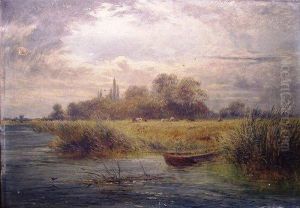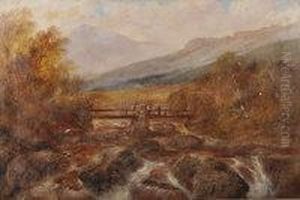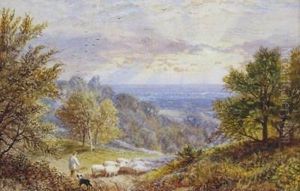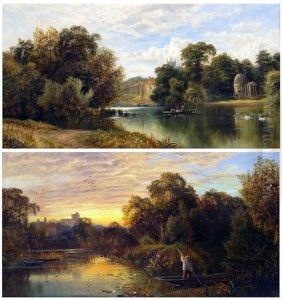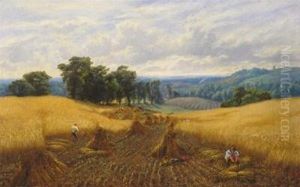Alfred Augustus Glendenning Paintings
Alfred Augustus Glendenning was a British painter known for his landscape and floral subjects, often capturing the British countryside with a particular emphasis on the beauty of its gardens and rural settings. Born in London in 1840, Glendenning showed an affinity for the arts at an early age and was inclined towards the natural beauty that surrounded him.
Glendenning’s career spanned the latter part of the 19th century and the early 20th century, a time of great change in the art world. However, he remained largely true to the traditional techniques and subjects of his predecessors, focusing on idyllic landscapes that offered a romantic view of the English countryside. His works were characterized by their detailed brushwork and bright, clear colors. He had a special talent for depicting the changing effects of light on the landscape, a skill that lent a particular charm and realism to his paintings.
Not much is documented about Glendenning's personal life or training, which was not uncommon for many artists of the time. However, it is known that he exhibited his work at various important venues, including the Royal Academy, the British Institution, and the Society of British Artists, indicating that he was an artist with a considerable reputation in his time. His paintings were well-received, and he gained a respectable following.
Glendenning lived through the Victorian era, a period that saw a great appreciation for the arts, including painting. This cultural backdrop provided a supportive environment for his work, allowing him to make a living as a professional artist. Despite the rise of modernist movements in the late 19th and early 20th centuries, Glendenning continued to paint in a style that was more aligned with the earlier part of the 19th century, largely ignoring the avant-garde styles that were becoming popular among his contemporaries.
Alfred Augustus Glendenning passed away in 1921, leaving behind a legacy of beautiful works that continue to be admired for their portrayal of the timeless English landscape. Today, his paintings can be found in various art collections and are sought after by collectors who appreciate Victorian landscape and genre painting.
